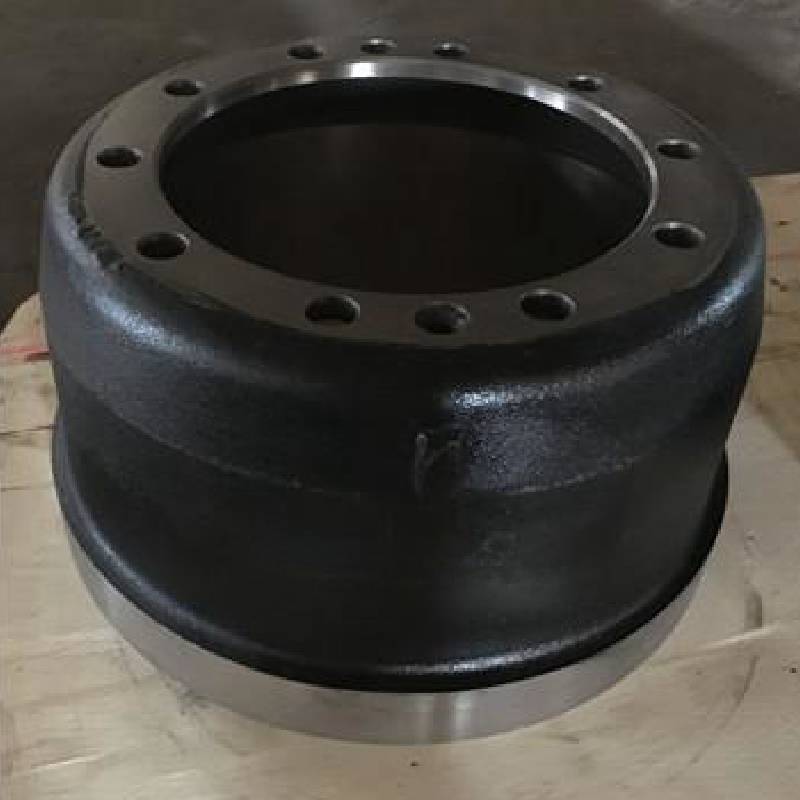Nov . 05, 2024 23:31 Back to list
Steps to Effectively Eliminate Rust from Your Brake Drum
How to Remove Rusted Brake Drums A Step-by-Step Guide
Removing rusted brake drums can be a daunting task, but with the right tools, techniques, and precautions, you can do it safely and effectively. Brake drums are crucial components of the braking system in many vehicles, and rust can interfere with brake performance, leading to potential safety hazards. This guide outlines the steps to remove rusted brake drums, ensuring both safety and efficiency in your work.
Tools and Materials Needed
Before you begin, gather the following tools and materials
1. Safety Gear Gloves, safety goggles, and a dust mask. 2. Tools - Jack and jack stands - Lug wrench - Brake drum puller (if necessary) - Hammer or rubber mallet - Wrench set - Pliers - Penetrating oil - Wire brush or sandpaper - Cleaning rags
Step-by-Step Instructions
1. Preparation - Park your vehicle on a level surface and engage the parking brake. - Place wheel chocks behind the rear wheels to prevent the vehicle from rolling. - Remove any hubcaps if necessary.
2. Loosening Lug Nuts - Using the lug wrench, slightly loosen the lug nuts on the wheel where you intend to remove the brake drum. Do not remove them completely; just break their initial tightness.
3. Lifting the Vehicle - Using a jack, lift the vehicle from the designated lift points. Once elevated, place jack stands under the vehicle for added safety. - Ensure the vehicle is stable before proceeding.
4. Removing the Wheel - Finish unscrewing the lug nuts and remove the wheel. Set it aside in a safe location.
how to remove rusted brake drum

5. Inspect the Brake Drum - Before attempting removal, inspect the condition of the brake drum and surrounding components. Look for any damaged or broken parts that might need attention.
6. Applying Penetrating Oil - Spray penetrating oil around the brake drum where it meets the wheel hub. Allow the oil to sit for a while (usually about 10-15 minutes) to loosen the rust and dirt holding the drum in place.
7. Attempting to Remove the Drum - If the drum is stuck, gently tap around its circumference using a hammer or rubber mallet. This can help break the rust seal that may be locking the drum to the hub. - If the drum still won’t budge, consider using a brake drum puller. Attach it according to the manufacturer's instructions, applying even pressure to pull the drum off the axle.
8. Removing the Drum - Once the drum is free, carefully slide it off the wheel hub. Be mindful of any brake components that might be attached, such as the wheel cylinder or brake shoes.
9. Cleaning and Inspection - After removal, clean the area where the drum was attached. Use a wire brush or sandpaper to remove any remaining rust or debris from the hub. Inspect the brake shoes, cylinders, and hardware for any signs of wear or damage.
10. Reinstallation or Replacement - If you’re reinstalling the drum after cleaning, reverse the removal steps. Ensure that all components are reassembled securely before reinstalling the wheel. - If the drum is too corroded or damaged, consider replacing it with a new one.
Safety Precautions
- Always wear safety gear to protect yourself from debris and sharp edges. - Be cautious when working under a lifted vehicle; ensure that the jack stands are secure. - Never work on brake components without the vehicle securely raised and supported.
Conclusion
Removing rusted brake drums can be challenging, but with proper preparation and the right techniques, it's a task that can be accomplished at home. Regular maintenance and inspections of your braking system can prevent severe rust and prolong the life of your brake components. If you're ever unsure or uncomfortable performing this task, don't hesitate to consult a professional mechanic. Your safety on the road is paramount, and taking care of your brake system is a vital part of vehicle maintenance.
-
Explore Japan: Ultimate Travel Guide & Authentic Experiences
NewsAug.19,2025
-
Your Brake Drum Man: Premium & Reliable Brake Drums for Sale
NewsAug.18,2025
-
ROR Web Development: Build Fast, Scalable, Secure Apps
NewsAug.17,2025
-
Scania Brake Drums: OEM Quality for Optimal Safety & Durability
NewsAug.16,2025
-
R.V.I: Advanced Remote Visual Inspection for Precision
NewsAug.15,2025
-
Discover HYUNDA: Innovative Vehicles, Equipment & Solutions
NewsAug.14,2025
